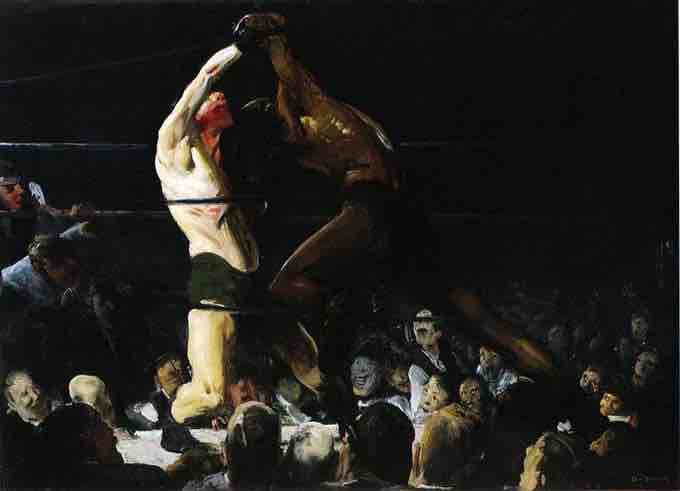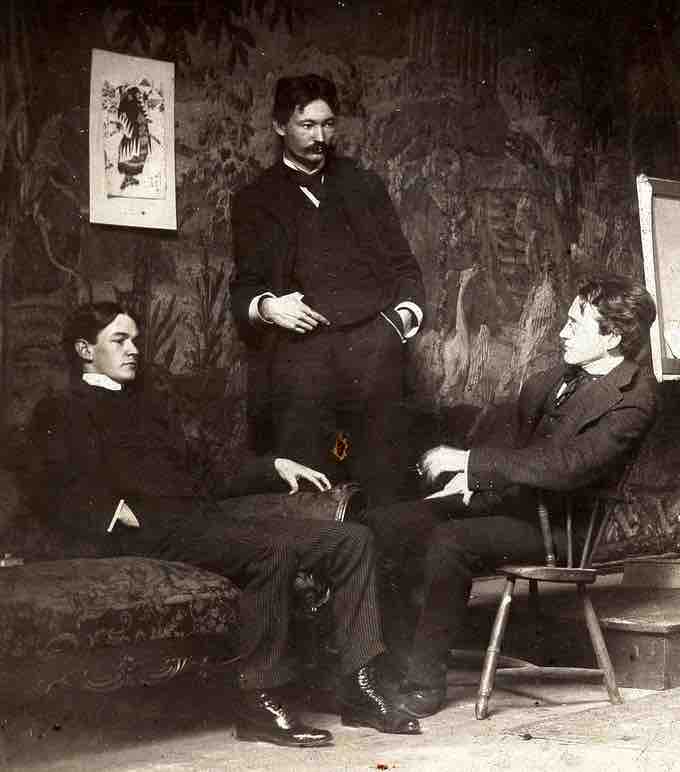The Ashcan School was a movement within American Realism that came into prominence in New York City during the early 20th century and is best known for works portraying scenes of daily life in New York's poorer neighborhoods.
American Realism
American Realism was a concept that arose in the late 19th and early 20th centuries in art, music, and literature. Whether it was a portrayal of contemporary culture, or a scenic view of downtown New York City, Realist works depicted a contemporary view of what was happening or what was "real. "
In America at the beginning of the 20th century, a new generation of painters, writers, and journalists were coming of age who were interested in creating a new style that reflected city life and an American population that was becoming increasingly more urban as the country entered the new century. American Realism attempted to portray the exhaustion and cultural exuberance of the American landscape and the life of ordinary people at home. Artists used the rapidly growing setting of the city to influence the color, texture, and look of their creative projects. Pulling away from fantasy and focusing on the grit and reality of daily life, American Realism presented a breakthrough—introducing Modernism, and what it means to be in the present. The Ashcan School, also known as "The Eight," was central to the new American Modernism in the visual arts.
The Ashcan School
The Ashcan School was a group of New York City artists who sought to capture the feel of turn-of-the-century New York through realistic portraits of everyday life. The movement grew out of a group known as The Eight, many of whom had experience as newspaper illustrators, and whose only show together in 1908 created a sensation. These artists were not only depicting Fifth Avenue socialites, but also the lower class and richly textured immigrant cultures. Critics of the time did not always appreciate their choice of subjects, which included alleys, tenements, slum dwellers, and in the case of John French Sloan, taverns frequented by the working class .
Five artists of The Eight, William Glackens, Robert Henri, George Luks, Everett Shinn, and John French Sloan became associated with the Ashcan School. However, the Ashcan School was not an organized group. Instead their unity consisted of a desire to tell truths about the state of the city. The first known use of the "ashcan" terminology in describing the movement was by Art Young in 1916. The artists of the Ashcan School rebelled against American Impressionism, which was the vanguard of American art at the time. In contrast to the Impressionists' emphasis on light, their Realist works were generally darker in tone, capturing harsher moments of life and often portraying such subjects as prostitutes, drunks, butchered pigs, overflowing tenements, boxing matches, and wrestlers. It was their frequent, although not total, focus upon poverty and the daily realities of urban life that prompted American critics to consider them to be on the fringe of Modern art.

Both Members of This Club
George Bellows, Both Members of This Club, 1909 (oil on canvas, National Gallery of Art)

Shinn Henri Sloan
Everett Shinn, Robert Henri and John Sloan, c. 1896 (unidentified photographer, black and white print, 18 x 13 cm.)